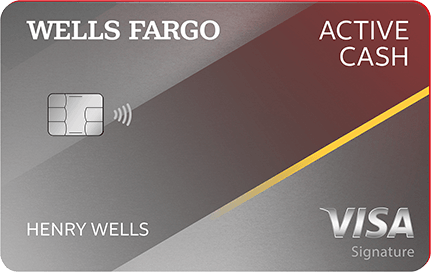One of the most frustrating things about credit card debt is that a high annual percentage rate can make it difficult to reduce your principal balance. No matter how much you pay, you still owe just as much. Credit cards with balance transfer offers are designed as an option for people in this situation.
Below, you’ll learn more about how balance transfers work, the benefits of balance transfers, and more.
What is a balance transfer credit card?

A balance transfer credit card, or balance transfer card, is a credit card that offers you the option to transfer a balance from an existing credit card account. Some balance transfer credit cards offer a 0% introductory APR on balance transfers for a certain period of time.
By transferring a balance from a higher rate credit card to a credit card with a balance transfer offer, you may be able to pay less interest on the debt you owe.
How does a balance transfer card work?
Some credit cards that offer balance transfers provide new cardholders a 0% annual percentage rate (APR) during an introductory period of anywhere from 6 to 21 months. This essentially stops the clock on interest charges during the introductory period, so your payments go toward knocking down the principal.
However, be sure to pay attention to the fine print. Some balance transfer credit cards require the transfer to take place in a limited time, such as within 90 to 120 days of card opening, and balance transfer fees can apply to each transfer you make.
Balance transfer credit cards can have a number of other features, too, including cash back or points rewards as well as a low APR on purchases. So, even if your goal is to find a balance transfer credit card, you may want to compare other short- and long-term benefits, too.

What debt can I transfer to a credit card?

The most common debt that people move to a balance transfer credit card is debt from another credit card. However, many balance transfer cards do allow you to roll over different types of debt from other lenders, for example, personal loan debt.
Balance transfer example
Let’s say you have a credit card with a $3,000 balance and an 18.99% APR. Paying $200 per month will take you 18 months and cost you $452 in interest charges.
You have an offer to transfer that balance to a card with a generous 0% intro/introductory APR for 18 months with a 3% balance transfer fee. With the same $200 monthly payments, you can pay off the balance in 16 months and it will cost you an extra $90 for the fee.
In this scenario, you could pay $362 less in interest and could help you pay off the card two months sooner.

What are the potential benefits of balance transfers?

Before you explore balance transfer offers, take a look at the following benefits to see how one of these cards could improve your financial situation and credit score status.
1. Lower interest rate on debt with an introductory balance transfer offer
Balance transfers work best when you can use them to decrease your cost of borrowing by lowering the interest rate you’re paying by taking advantage of an introductory offer like 0% APR. By following a payoff plan within the introductory offer period, you can potentially reduce your debt payoff with a balance transfer.
2. Pay down credit card debt faster
Credit card debt can quickly become a challenge. When you only pay the minimum payment on a credit card, it takes a long time to start lowering your balance.
If your balance transfer card offers an introductory 0% APR, your monthly payments go toward reducing your principal balance during the introductory period. With regular on time monthly payments, you may make progress reducing your debt more quickly than if the debt remained on the higher-interest card. Just remember that balance transfer fees are in addition to your principal balance so, make sure to factor those in when deciding if a balance transfer card is right for you.

What are the potential drawbacks of balance transfers?

When choosing a new credit card, whether for a balance transfer or rewards, consider the fees and your own spending habits.
1. Balance transfer fees may apply
It’s fairly standard for credit card companies to charge balance transfer fees, usually in the range of 3% to 5% of the balance amount. There may be some cards that let you transfer a balance without a fee, but those promotions are rare.
Even when paying balance transfer fees, you can still come out on top if you’re able to pay off your entire balance within the introductory APR period. But if you make frequent balance transfers, those fees can add up fast.
2. Balance transfer may be a temporary solution to a credit management problem
Any time you use a debt consolidation method to pay off your bills, it’s important to create and follow a well-thought-out financial plan. When you consider a balance transfer offer, crunch the numbers to make sure you can afford the monthly payment needed to pay down the balance within the allotted promotional period.
It can be easy to fall into the trap of transferring a balance to a new credit card, not paying it off, and then making new purchases with the new or old card again. Without fixing the underlying spending habits, a balance transfer card may just become an additional debt.

Is a balance transfer credit card the best card for me?

When deciding about applying for a credit card with a balance transfer offer, consider how much credit card debt you currently owe and the APR you’re paying on that debt. Next, think about your credit score. You may need at least decent, if not excellent, credit to qualify for credit cards with the best balance transfer offers, which may have a generous introductory period and other perks.
Evaluate other features for the cards you’re considering, too. These include an annual fee, the balance transfer fee, the regular purchase APR, late fees, and if there are cash back perks or rewards.
The last step is to consider your amount of debt and the 0% intro APR period, so you can know if the balance transfer card will help you achieve your goal of paying off your old credit card account. You can figure out how much you need to pay per month by dividing your total balance (including the balance transfer fee charge) by the number of months in the introductory APR period.








